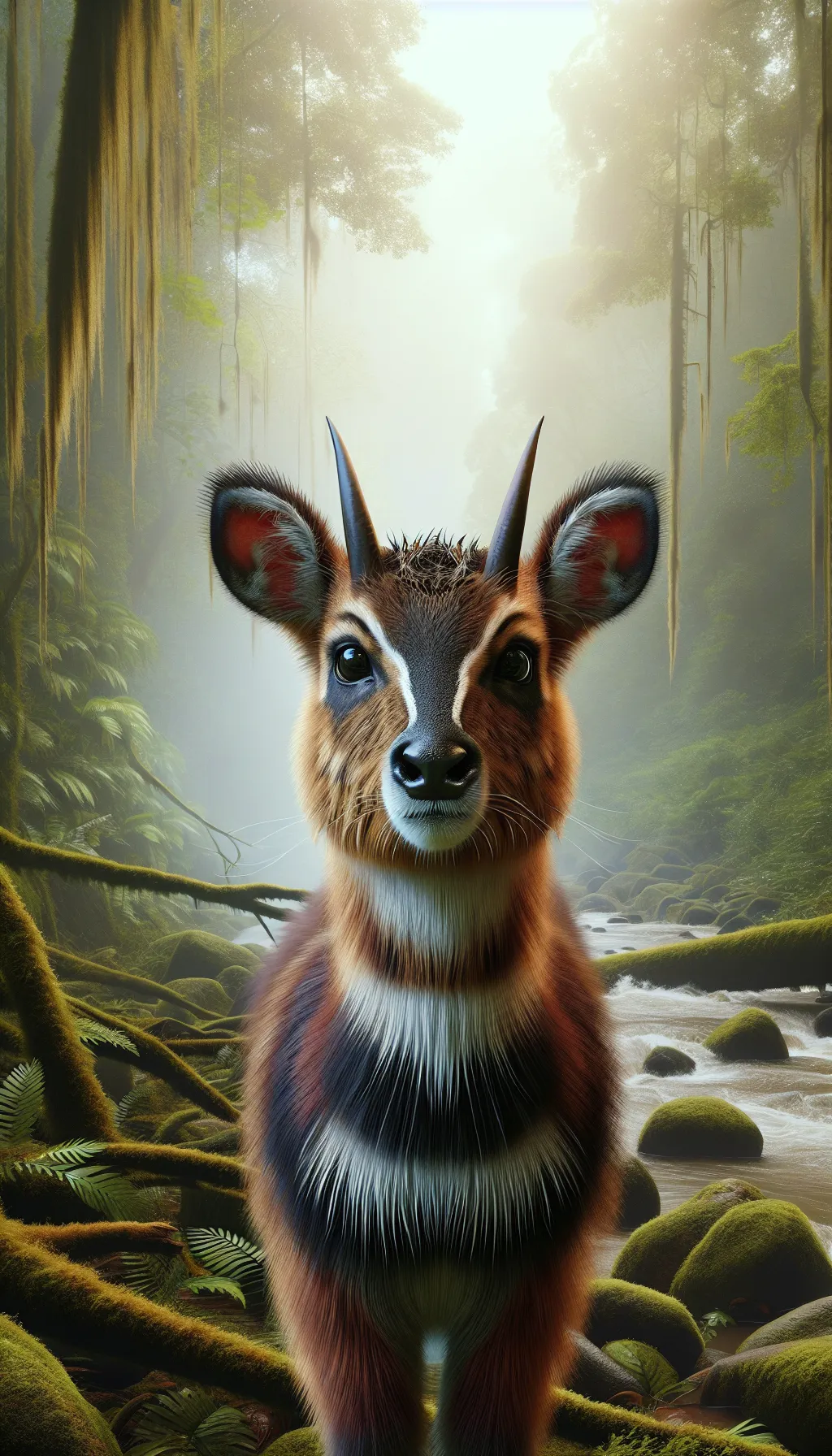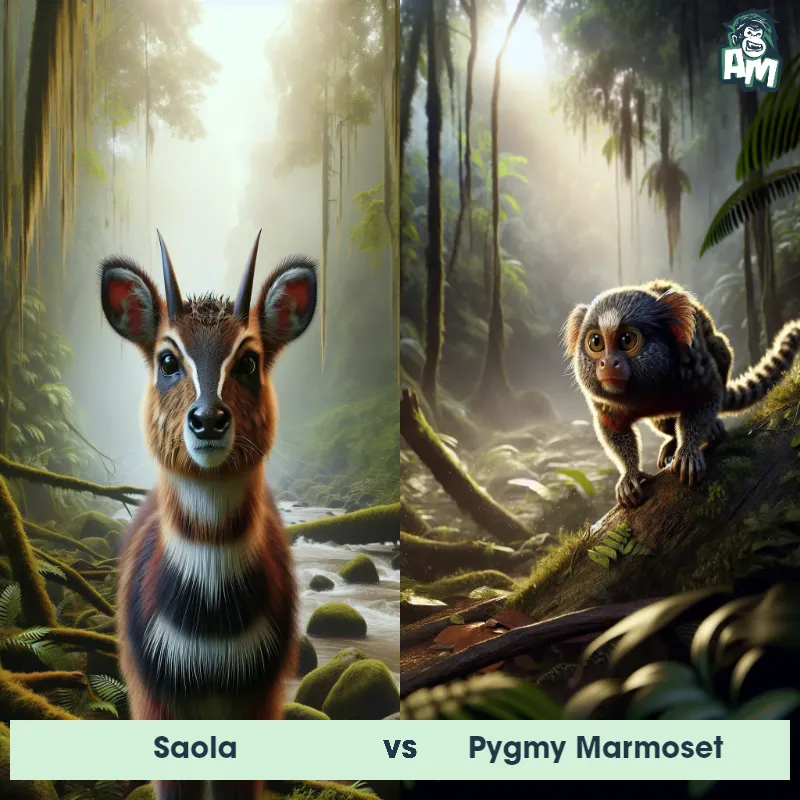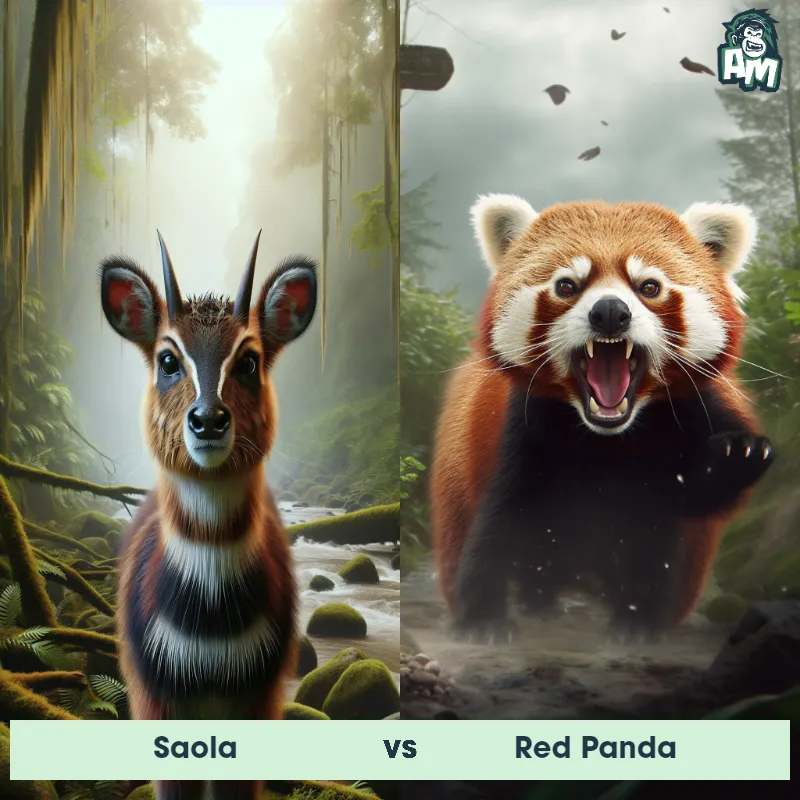The Saola
The Saola, also known as the "Asian unicorn," is a critically endangered mammal that can be found in the Annamite Mountains of Vietnam and Laos. It is a medium-sized bovine with a unique appearance, characterized by long, slender legs, a narrow head, and vibrant chestnut-colored fur. Their most striking feature is their long, straight horns that can reach up to 50 centimeters in length. Saolas are known for their elusive nature and can move through dense forests with ease.

| Saola | |
|---|---|
| Size | Height: 31-35 inches (78-89 cm), Length: 4.9-5.6 feet (1.5-1.7 meters) |
| Weight | 176-220 pounds (80-100 kilograms) |
| Speed | 23mph (37km/h) |
| Key Strength | Sharp horns for defense |
| Biggest Weakness | Lack of physical aggression and dependence on horn defense |
| Scientific Name | Pseudoryx nghetinhensis |
| Family | Bovidae |
| Habitat | Mountainous regions |
| Geography | Vietnam and Laos |
| Diet | Herbivore - leaves, grass, foliage |
| Lifespan | 10 years - 15 years |

The Saola
The Saola, also known as the "Asian unicorn," is a critically endangered mammal that can be found in the Annamite Mountains of Vietnam and Laos. It is a medium-sized bovine with a unique appearance, characterized by long, slender legs, a narrow head, and vibrant chestnut-colored fur. Their most striking feature is their long, straight horns that can reach up to 50 centimeters in length. Saolas are known for their elusive nature and can move through dense forests with ease.
Fun Fact: One fun fact about Saola is that they were only discovered by scientists in 1992, making them one of the most recently discovered large mammals.
| Saola | |
|---|---|
| Size | Height: 31-35 inches (78-89 cm), Length: 4.9-5.6 feet (1.5-1.7 meters) |
| Weight | 176-220 pounds (80-100 kilograms) |
| Speed | 23mph (37km/h) |
| Key Strength | Sharp horns for defense |
| Biggest Weakness | Lack of physical aggression and dependence on horn defense |
| Scientific Name | Pseudoryx nghetinhensis |
| Family | Bovidae |
| Habitat | Mountainous regions |
| Geography | Vietnam and Laos |
| Diet | Herbivore - leaves, grass, foliage |
| Lifespan | 10 years - 15 years |
Saola Matchups
We use AI to simulate matchups between the Saola and other animals. Our simulation considers size, strength, and natural predatory behaviors to determine the most likely outcome.

Can't find the Matchup you want?
Create Your Own MatchupSaola: Diet, Predators, Aggression, and Defensive Behaviors
What do Saolas eat?
Saolas are herbivores and primarily feed on leaves, fruits, and buds found in the dense forests of Southeast Asia. They are known to have a selective diet, preferring specific plant species such as figs and bamboo shoots.
Do Saolas have any predators?
Saolas are preyed upon by large carnivores such as tigers, leopards, and dholes. Their elusive nature and excellent camouflage help them avoid detection by predators, but they still face threats from poaching and habitat loss.
Are Saolas aggressive?
Saolas are known to be shy and elusive animals, avoiding confrontations with other species, including humans. They are not aggressive by nature and typically avoid conflict by retreating into dense vegetation when threatened.
Do Saolas fight?
Saolas are not known to engage in physical fights with other individuals. Instead, they rely on their stealth and agility to evade potential threats and maintain their solitary lifestyle in the dense forests where they reside.
How do Saolas defend themselves?
Saolas have developed several mechanisms to defend themselves against predators. They possess sharp, pointed horns on their heads that can be used to fend off attacks. Additionally, their ability to blend into their surroundings and remain unseen provides them with a valuable defense against potential threats.
What is Saolas' biggest weakness in a fight?
Despite their horns and camouflage abilities, Saolas are still vulnerable to attacks by larger predators due to their relatively small size and solitary nature. When faced with a determined threat, Saolas may struggle to defend themselves effectively, making them susceptible to predation in certain circumstances.
Fun Fact: Another fascinating fact about Saola is that they have a shy and elusive behavior, which has made it extremely challenging for researchers to study and conserve their population.
Fun Fact: Although popularly referred to as "Asian unicorns," Saolas are actually more closely related to wild cattle and share a common ancestor with cows and goats.













